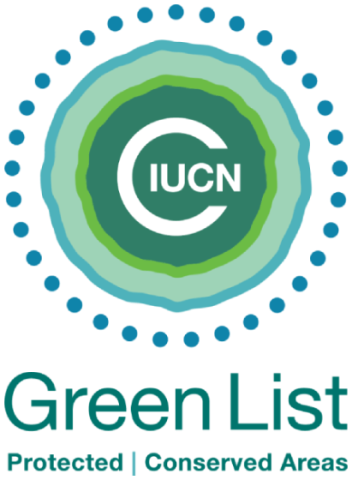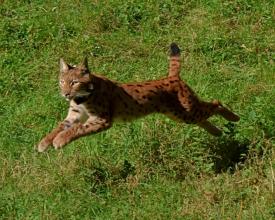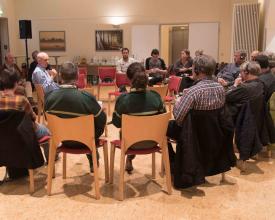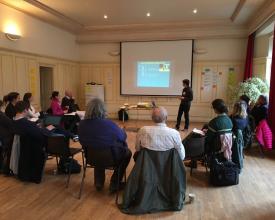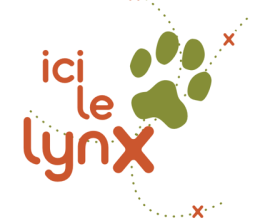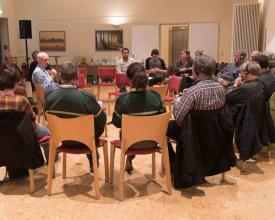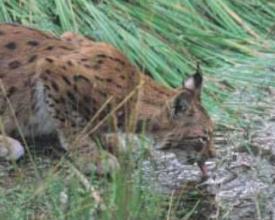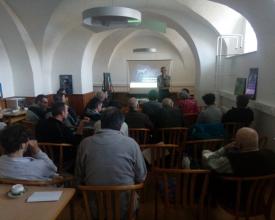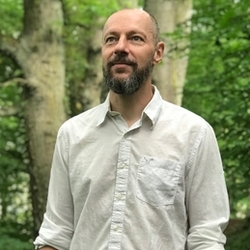
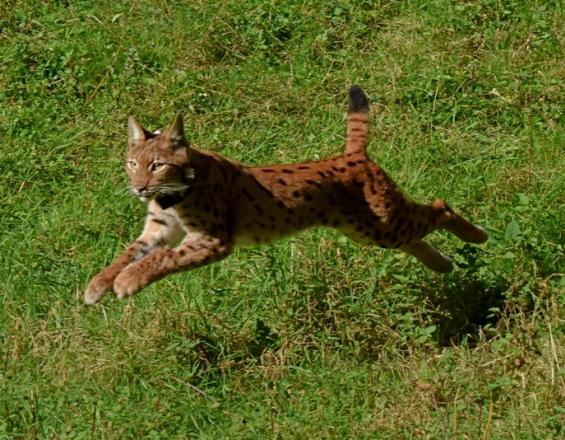
Uno de los objetivos de la nueva carta del Parque Natural Regional de los Vosgos del Norte es garantizar el seguimiento continuo de las especies características de algunos hábitats de los Vosgos del Norte (roquedos, bosques, huertos, cursos de agua, humedales). La carta también pretende trabajar para reforzar la población de linces y su aceptación por parte de los habitantes, a nivel transfronterizo.
El parlamento del lince reúne a todas las partes interesadas por el lince en el territorio del Parque. De este modo, cada actor formula propuestas para mejorar la aceptación del lince.
Contexto
Défis à relever
El principal reto es la resolución de un conflicto entre varias partes interesadas.
Ubicación
Procesar
Resumen del proceso
La mediación con los cazadores es una de las prioridades fijadas por el Parlamento del lince. Los cazadores son informados de los avances de las operaciones de reintroducción en el Palatinado del mismo modo que los parlamentarios. El Parque informa al Parlamento sobre la marcha de las acciones de mediación con el sector cinegético. Los representantes de los cazadores son diputados, por lo que la información circula bien. Existe una estrecha relación entre estos dos proyectos.
Bloques de construcción
Puesta en marcha de un parlamento para mejorar la aceptación del lince
Dos mediadores profesionales trabajaron con un grupo de 20 personas con un enfoque participativo y juegos de rol, respeto por las palabras de los demás y transparencia informativa. Fueron necesarias cuatro reuniones de un día para elaborar un libro blanco de propuestas de cada actor para mejorar la aceptación del lince.
Estas propuestas se han remitido a las organizaciones / funcionarios para su posible negociación, validación y aplicación. El parlamento se reúne anualmente y el Parque es el coordinador y ejecuta sus compromisos.
Factores facilitadores
El parque es reconocido por su papel de facilitador y el lince es liberado en nuestros vecinos alemanes. A pesar de ello las opiniones son opuestas según los actores y el ambiente del parlamento se apacigua porque se respeta la palabra de cada uno y se establece un clima de confianza.
Lección aprendida
El nivel de compromiso es variable según los miembros del parlamento. El parque desempeña un papel central como coordinador y moderador del parlamento. Su nivel de compromiso es importante.
Mantiene la cohesión del parlamento y el interés de sus miembros enviando información periódica sobre los linces liberados en el bosque del Palatinado. La transparencia de la información sobre los linces contribuye a reforzar la intimidad de los miembros del parlamento.
Colaboración con los cazadores para evitar la caza furtiva del lince
Se han organizado varias reuniones informativas para los cazadores, lo que ha permitido mantener un grupo de trabajo sobre las relaciones entre la caza y el lince. Está en marcha un proyecto de mediación con los cazadores de los Vosgos del Norte para mejorar la aceptación del lince. Los objetivos de esta mediación son evitar cualquier acto de caza furtiva, mejorar la aceptación del lince por parte de los cazadores y sensibilizar sobre la gestión global del bosque.
Factores facilitadores
Un estudio sociológico de las representaciones que los cazadores tienen del lince. El estudio se realizó con un amplio abanico de personas. Este estudio ha demostrado que, aunque la mayoría de los cazadores temen al lince por los ciervos, los nuevos cazadores están dispuestos a aceptarlo para cazar la imagen de la caza.
Lección aprendida
Este trabajo con los cazadores ha demostrado que es necesario trabajar a dos niveles: una mediación individual con el máximo de cazadores locales y una mediación con los representantes de las asociaciones para ver cómo el lince es una oportunidad o un riesgo.
Impactos
Las partes interesadas se reúnen al menos una vez al año para supervisar el cumplimiento de los compromisos de cada una de ellas. Estas reuniones anuales o extraordinarias tienen por objeto iniciar el diálogo proporcionando un espacio para el intercambio y la comunicación de información, de manera respetuosa, entre los representantes de los cazadores, los científicos y los gestores de los parques, sobre las sueltas de linces en particular, pero también sobre las actualizaciones del programa LIFE. A veces, también se invita a científicos a presentar su trabajo sobre el lince u otros temas. Cada sesión es también una oportunidad para evaluar el progreso de los compromisos de cada miembro, y para invitar a diversos medios de comunicación a informarse sobre el lince para una comunicación más amplia. Todo ello contribuye a establecer la transparencia en cuanto al intercambio de información, que es otro objetivo importante del Parlamento.
Cada miembro de esta estructura de gobernanza presenta propuestas, que primero deben ser validadas por los demás miembros. A continuación, las autoridades del Parque presentan las aprobadas al Prefecto, representante regional del Estado francés.
Beneficiarios
Cazador, agricultor, silvicultor, usuario de los bosques, elegido local, ONG ecologista

